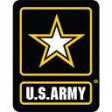Army issues RFI for STRI engineering innovative solutions
 On April 10, the Army PEO STRI Acquisition Center released the following request for information (RFI) (Solicitation Number: W900KK15SEISRFI). Capabilities statements are due electronically no later than 12:00 EST on May 22.
On April 10, the Army PEO STRI Acquisition Center released the following request for information (RFI) (Solicitation Number: W900KK15SEISRFI). Capabilities statements are due electronically no later than 12:00 EST on May 22.
The U.S. Army Program Executive Office for Simulation, Training & Instrumentation (PEO STRI) is conducting market research to provide enterprise solutions while demonstrating innovative procedures highlighting rapid acquisition, rapid prototyping and rapid development of solutions to reduce life cycle costs of legacy portfolios and reduce enterprise risks. Tasks will include solutions in engineering, integration, and upgraded capability areas across the PEO portfolio. The systems engineering process will be applied to generate solutions that solve legacy transition needs, and inform the future training product enterprise.
Goal Statements:
a. Engineer and integrate solutions to answer legacy transition needs.
b. Integrate mature and innovative technologies to reduce life cycle costs, ensure capability throughout disposal of legacy systems and inform the future training product enterprise.
c. Advance emerging engineering processes.
d. Decrease the overall acquisition timeline.
e. Improve the quality of the products and streamline engineering processes.Candidate efforts:
a. Establish a PEO STRI wide cyberspace defense process for Cyber Security.
b. Establish a Post Production Software Support Lab across the enterprise.
c. Design a Service Oriented Architecture (SOA) based Immersive Architecture, incorporating VICTORY and further interoperability of legacy systems with future training products.
d. Design a Stryker (interim) training solution. Incorporating the new Immersive Architecture.
e. Design solutions to capability gaps during sustainment.
f. Design solutions to training gaps during sustainment.
g. Integrate mature and innovative technologies into products portfolio. These technologies are (not limited to): Service-oriented Architectures, virtualization, augmented reality, intelligent tutors, gaming engines, game-based image generators (common IG), enhanced visual displays, haptic, infinite movement in confined space, intuitive systems, cognitive stressors, embedded training, cloud based simulation and classroom training, and interfacing to live training.
h. Enhanced weapons effects/weapon orientation.
i. Resolve fair fight issues/air to ground integrated training during sustainment and through disposal.
j. Improve mission rehearsal capabilities.
k. Front end training effectiveness analysis.
l. Design and standardize solutions that provide the following components and services to legacy systems:
i. Head mounted displays (HMD)
ii. Image generators
iii. Virtualizations
iv. Distributed operations
v. Virtual gaming fusion
The requirements will be fully defined when the draft RFP is released.Additional information is available here.
Source: FedBizOpps








